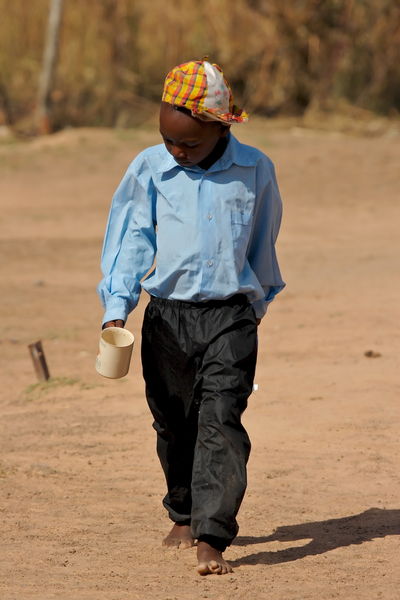Zambia - Poverty and wealth

Zambia is a country defined by extreme poverty. By 2000, over 70 percent of the population lived on less than 1 dollar a day (the figure 10 years before was 50 percent) and 64 percent of this income was spent on essential food. This is in a country whose public expenditure on health as a percentage of GDP fell from 2.6 percent in 1990 to 2.3 percent in 1998, and where external aid per capita fell from US$119.7 in 1992 to US$36.1 in 1998. In addition, the daily per capita supply of calories fell from 2,173 in 1970 to 1,970 in 1997, and the daily supply of protein declined by 19.2 percent and fat by 27.1 percent over the same period. Consequently, 3 in 5 of Zambian children were malnourished by 2001. Along with the impact of the HIV/AIDS epidemic, these factors have contributed to a declining life expectancy for the average Zambian from 47.3 years in the early 1970s to 40.1 in the late 1990s.
There are vast disparities in living conditions between Zambia's rural and urban habitants. For example, whilst 64 percent of the urban population have access to safe water, only 27 percent of the rural population are so fortunate. Moreover, 46 percent of the urban population live below the poverty line compared to a massive 88 percent in rural areas. In more general terms, the disparity of wealth between Zambia's rich and poor is also considerable.
| Distribution of Income or Consumption by Percentage Share: Zambia | |
| Lowest 10% | 1.6 |
| Lowest 20% | 4.2 |
| Second 20% | 8.2 |
| Third 20% | 12.8 |
| Fourth 20% | 20.1 |
| Highest 20% | 54.8 |
| Highest 10% | 39.2 |
| Survey year: 1996 | |
| Note: This information refers to expenditure shares by percentiles of the population and is ranked by per capita expenditure. | |
| SOURCE: 2000 World Development Indicators [CD-ROM]. | |
| Household Consumption in PPP Terms | |||||||
| Country | All food | Clothing and footwear | Fuel and power a | Health care b | Education b | Transport & Communications | Other |
| Zambia | 52 | 10 | 8 | 2 | 11 | 3 | 14 |
| United States | 13 | 9 | 9 | 4 | 6 | 8 | 51 |
| South Africa | N/A | N/A | N/A | N/A | N/A | N/A | N/A |
| Dem. Rep. of Congo | N/A | N/A | N/A | N/A | N/A | N/A | N/A |
| Data represent percentage of consumption in PPP terms. | |||||||
| a Excludes energy used for transport. | |||||||
| b Includes government and private expenditures. | |||||||
| SOURCE: World Bank. World Development Indicators 2000. | |||||||
The poorest 60 percent of the population share 25.2 percent of the nation's wealth, whereas the wealthiest 10 percent benefit from 39.2 percent of the wealth. Incomes have not grown as fast as inflation which, in combination with the introduction of user fees for health and education services, means that a majority of Zambians cannot afford to provide themselves with even basic social services.
Dignity is worth living for .